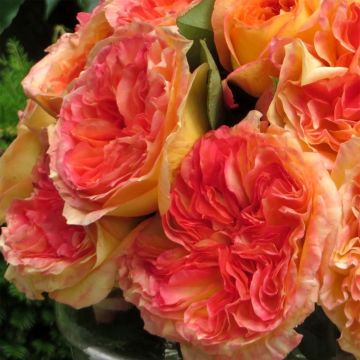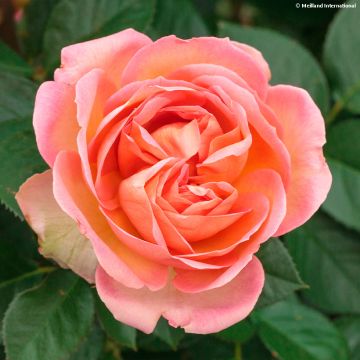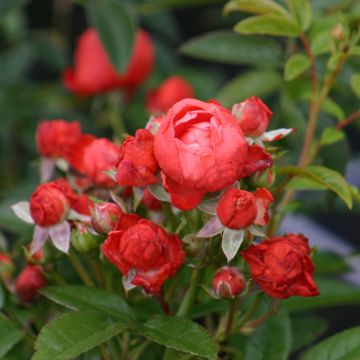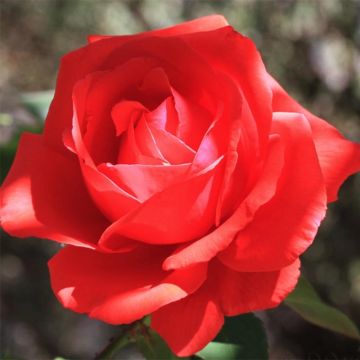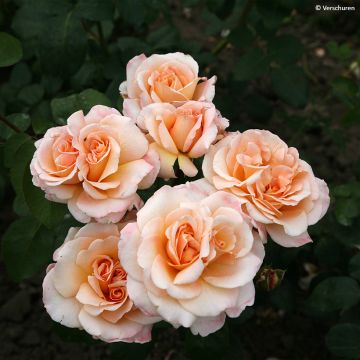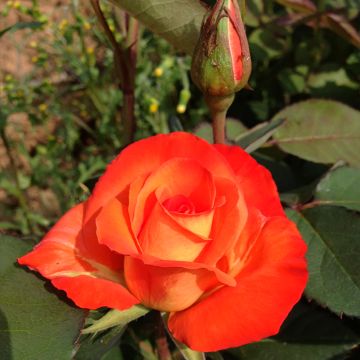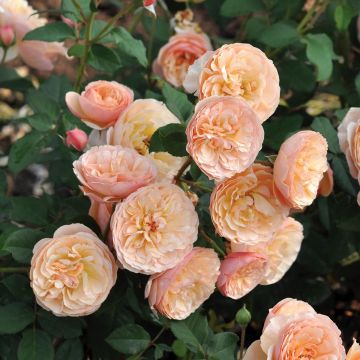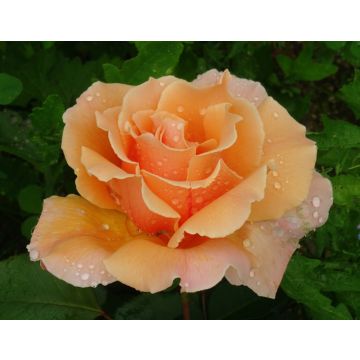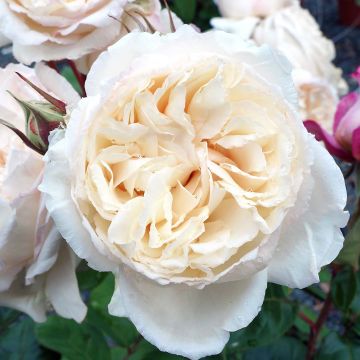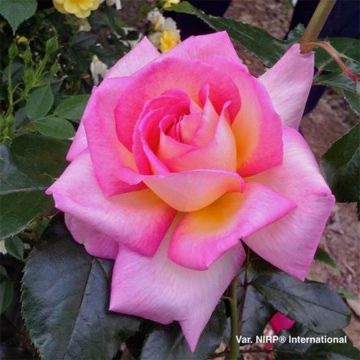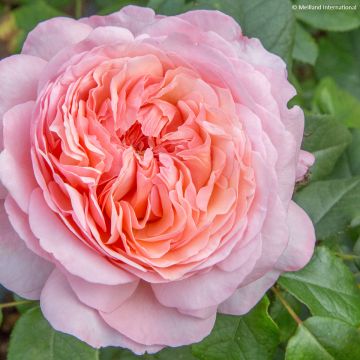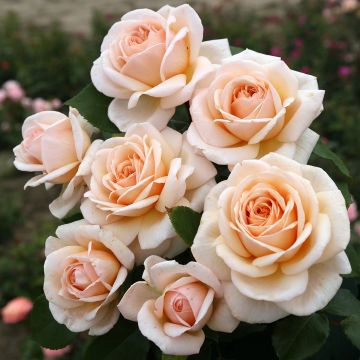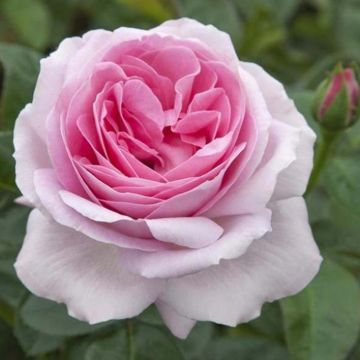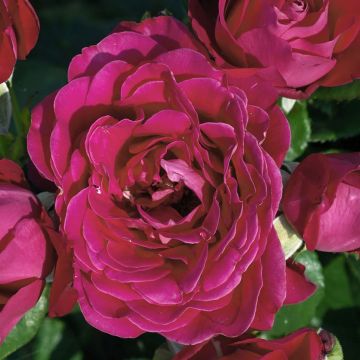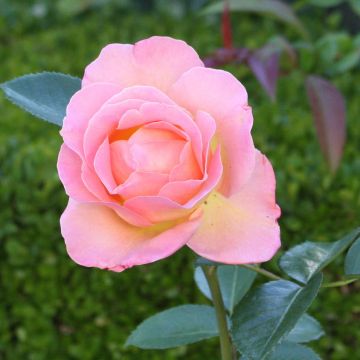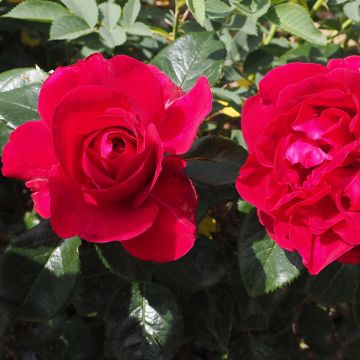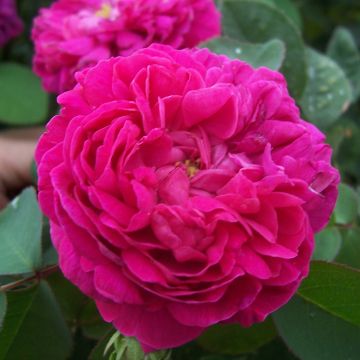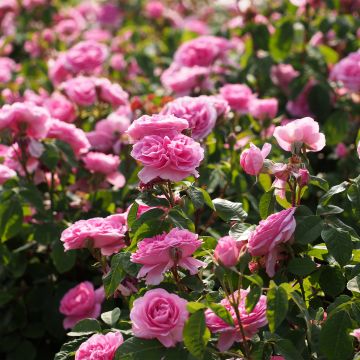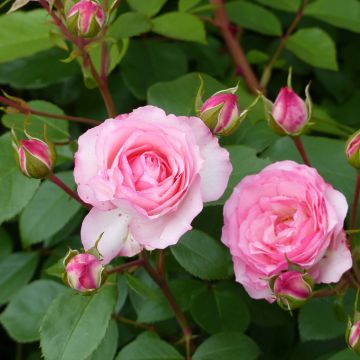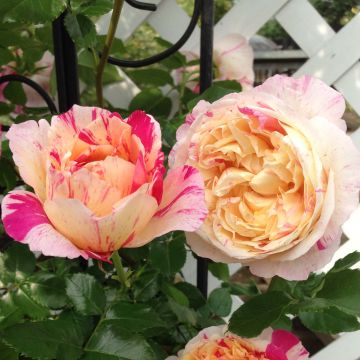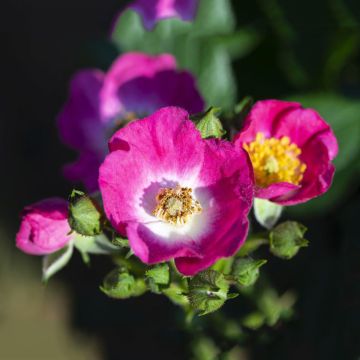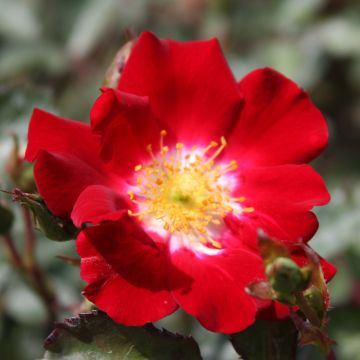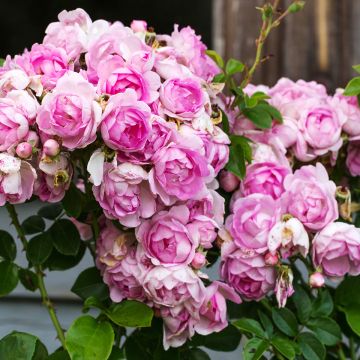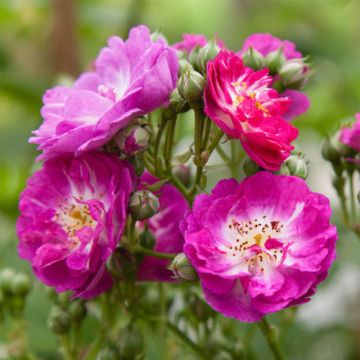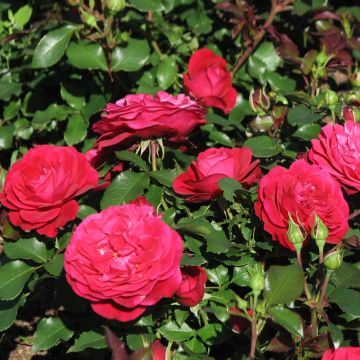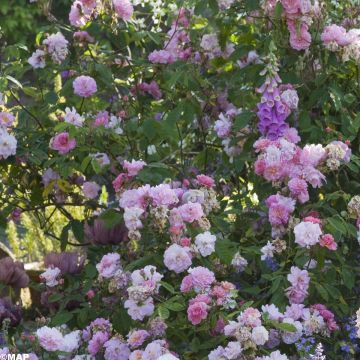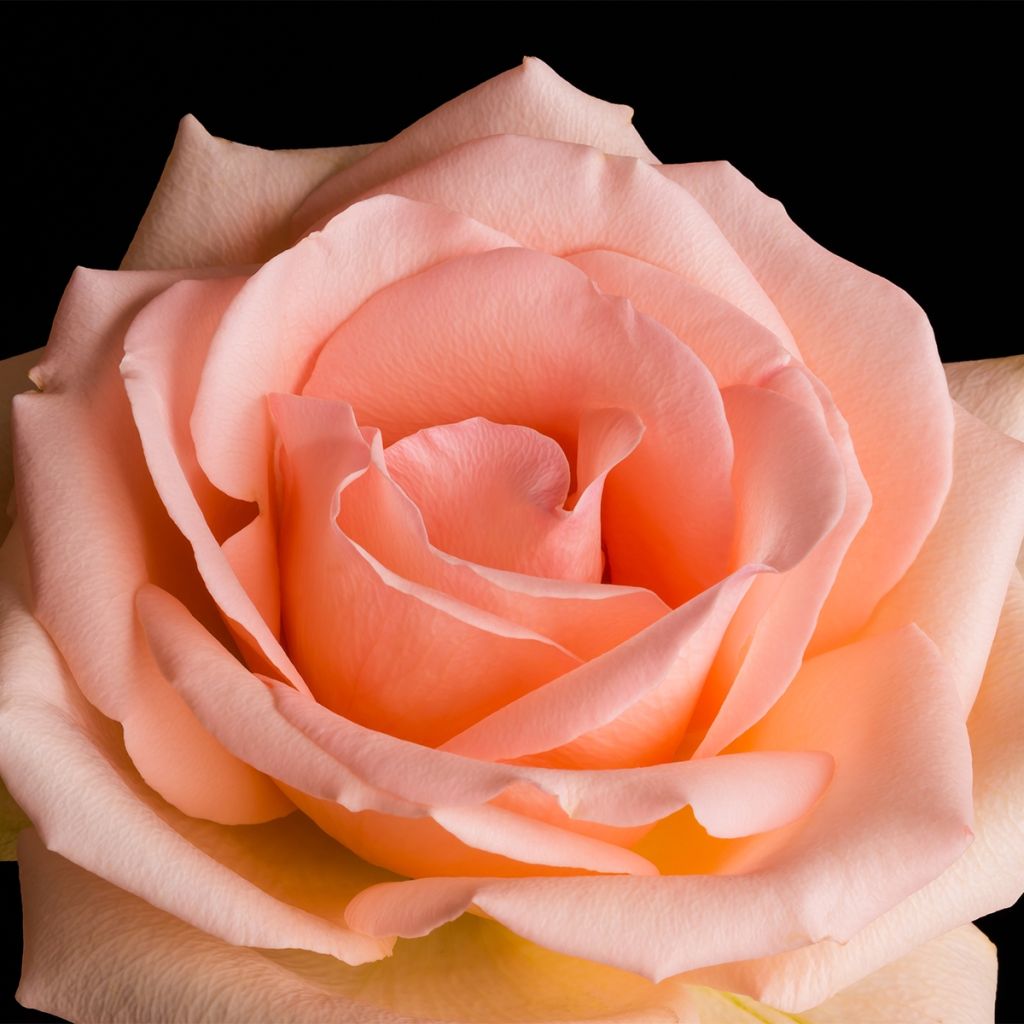

Rosier à grandes fleurs Over the Moon
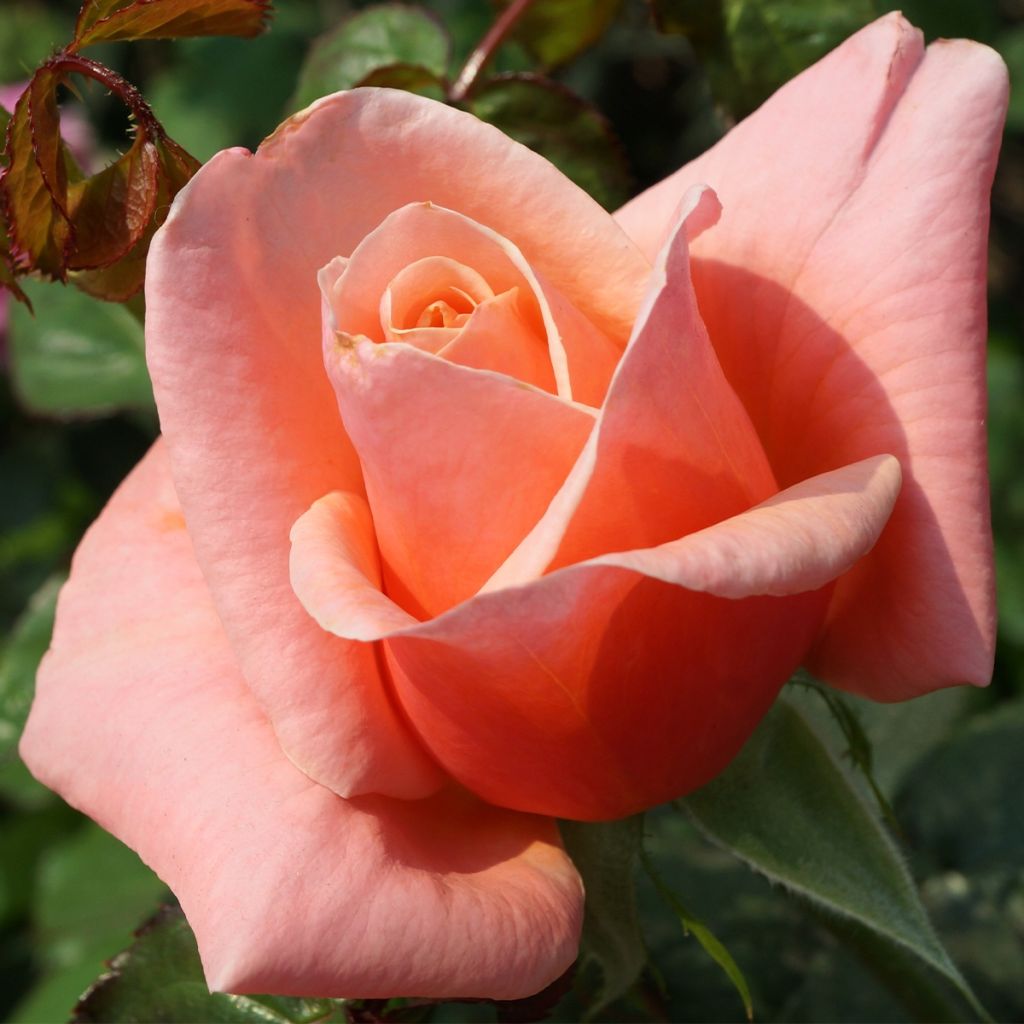

Rosier à grandes fleurs Over the Moon


Rosier à grandes fleurs Over the Moon
Rosa Over the Moon
Rosa Over the Moon® Oraclelon
Rose [Over the Moon]
Why not try an alternative variety in stock?
View all →This plant carries a 24 months recovery warranty
More information
We guarantee the quality of our plants for a full growing cycle, and will replace at our expense any plant that fails to recover under normal climatic and planting conditions.
From €5.90 for pickup delivery and €6.90 for home delivery
Express home delivery from €8.90.
From €5.90 for pickup delivery and €6.90 for home delivery
Express home delivery from €8.90.
Delivery to Corse prohibited: UE law prohibits the import of this plant from mainland France to Corse as part of the fight against Xylella fastidiosa. Please accept our sincere apologies.
More information
Does this plant fit my garden?
Set up your Plantfit profile →
Description
Rosa Over The Moon is one of the rare European and French creations to be included in the ranking of the oldest new rose competition in North America, held in Portland, Oregon. It is a well-deserved reward recognising the splendour of its dawn-coloured roses, its abundant flowering, and its cultural qualities. The bush itself has a very regular habit and its foliage is very healthy. It is a beautiful variety for the garden or bouquets.
Rosa Over The Moon (Oraclelon) was introduced to the market in the early 2000s by the Orard rose gardens, a family-owned company located in Feyzin, not far from Lyon. It is classified as a modern large-flowered rose, also known as hybrid teas, as evidenced by the turbinate shape of its flowers. This creation has received prestigious awards:
- Gold Medal, PORTLAND, OREGON, 2013
- Great Rose of the Century, LYON, 2006
- Gold Medal, MONZA, 2005
- Silver Medal, GENEVA, 2005
- Bronze Medal, BADEN-BADEN, 2005
- Certificate of Merit, LE ROEULX, 2005
Rosa Over the Moon is a repeat-flowering rose that blooms in successive waves from June to October. The plant has a bushy, slightly upright habit. It has a rapid growth rate. It will reach approximately 1m (3ft) in height and 80cm (32in) in width. The flowers are globular and turbinate, measuring 10 to 12cm (4 to 5in) in width, composed of more than 30 petals. The colour palette includes various shades of yellow and orange enriched with salmon reflections. Their fragrance is quite light, and is more noticeable in warm weather. It is dominated by fruity notes evoking apple. The tough, medium green, semi-glossy foliage is resistant to diseases, and perfectly enhances the colour of the roses. The deciduous foliage falls in autumn and regrows in spring. This variety seems to be less comfortable in hot climates.
Rosa Over the Moon will look wonderful in a large rose bed or as a standalone in a well-maintained garden. This variety adapts to all soils that are not too dry, which means it can be grown in many regions, even at medium altitudes. It pairs perfectly with white, pink, and mauve roses, as well as with pretty, easy-to-grow plants like perennial geraniums (Geranium 'Blue Cloud', G. 'Anne Folkard', G. 'Nimbus', G. 'Orion'), bellflowers (lactiflora, rapunculoides), catmints, love-in-a-mist, foxgloves, and phlox. Its flowers are perfect for creating elegant bouquets.
Report an error about the product description
Plant habit
Flowering
Foliage
Botanical data
Rosa
Over the Moon® Oraclelon
Rosaceae
Rose [Over the Moon]
Cultivar or hybrid
Other Large-flower tea Roses
Planting and care
Work the soil to a depth of 40 cubic cm, crumble the soil well, and place a base amendment such as dried blood or dehydrated horn in the planting hole. Position your young plant by covering the top of the root ball with 3cm (1in) of soil, fill in the hole, and water generously to remove any air pockets. In dry weather, water regularly for a few weeks to facilitate root growth. Provide your rose with special rose fertiliser that stimulates flowering.
Planting period
Intended location
Care
-
, onOrder confirmed
Reply from on Promesse de fleurs
Roses by purpose
Haven't found what you were looking for?
Hardiness is the lowest winter temperature a plant can endure without suffering serious damage or even dying. However, hardiness is affected by location (a sheltered area, such as a patio), protection (winter cover) and soil type (hardiness is improved by well-drained soil).

Photo Sharing Terms & Conditions
In order to encourage gardeners to interact and share their experiences, Promesse de fleurs offers various media enabling content to be uploaded onto its Site - in particular via the ‘Photo sharing’ module.
The User agrees to refrain from:
- Posting any content that is illegal, prejudicial, insulting, racist, inciteful to hatred, revisionist, contrary to public decency, that infringes on privacy or on the privacy rights of third parties, in particular the publicity rights of persons and goods, intellectual property rights, or the right to privacy.
- Submitting content on behalf of a third party;
- Impersonate the identity of a third party and/or publish any personal information about a third party;
In general, the User undertakes to refrain from any unethical behaviour.
All Content (in particular text, comments, files, images, photos, videos, creative works, etc.), which may be subject to property or intellectual property rights, image or other private rights, shall remain the property of the User, subject to the limited rights granted by the terms of the licence granted by Promesse de fleurs as stated below. Users are at liberty to publish or not to publish such Content on the Site, notably via the ‘Photo Sharing’ facility, and accept that this Content shall be made public and freely accessible, notably on the Internet.
Users further acknowledge, undertake to have ,and guarantee that they hold all necessary rights and permissions to publish such material on the Site, in particular with regard to the legislation in force pertaining to any privacy, property, intellectual property, image, or contractual rights, or rights of any other nature. By publishing such Content on the Site, Users acknowledge accepting full liability as publishers of the Content within the meaning of the law, and grant Promesse de fleurs, free of charge, an inclusive, worldwide licence for the said Content for the entire duration of its publication, including all reproduction, representation, up/downloading, displaying, performing, transmission, and storage rights.
Users also grant permission for their name to be linked to the Content and accept that this link may not always be made available.
By engaging in posting material, Users consent to their Content becoming automatically accessible on the Internet, in particular on other sites and/or blogs and/or web pages of the Promesse de fleurs site, including in particular social pages and the Promesse de fleurs catalogue.
Users may secure the removal of entrusted content free of charge by issuing a simple request via our contact form.
The flowering period indicated on our website applies to countries and regions located in USDA zone 8 (France, the United Kingdom, Ireland, the Netherlands, etc.)
It will vary according to where you live:
- In zones 9 to 10 (Italy, Spain, Greece, etc.), flowering will occur about 2 to 4 weeks earlier.
- In zones 6 to 7 (Germany, Poland, Slovenia, and lower mountainous regions), flowering will be delayed by 2 to 3 weeks.
- In zone 5 (Central Europe, Scandinavia), blooming will be delayed by 3 to 5 weeks.
In temperate climates, pruning of spring-flowering shrubs (forsythia, spireas, etc.) should be done just after flowering.
Pruning of summer-flowering shrubs (Indian Lilac, Perovskia, etc.) can be done in winter or spring.
In cold regions as well as with frost-sensitive plants, avoid pruning too early when severe frosts may still occur.
The planting period indicated on our website applies to countries and regions located in USDA zone 8 (France, United Kingdom, Ireland, Netherlands).
It will vary according to where you live:
- In Mediterranean zones (Marseille, Madrid, Milan, etc.), autumn and winter are the best planting periods.
- In continental zones (Strasbourg, Munich, Vienna, etc.), delay planting by 2 to 3 weeks in spring and bring it forward by 2 to 4 weeks in autumn.
- In mountainous regions (the Alps, Pyrenees, Carpathians, etc.), it is best to plant in late spring (May-June) or late summer (August-September).
The harvesting period indicated on our website applies to countries and regions in USDA zone 8 (France, England, Ireland, the Netherlands).
In colder areas (Scandinavia, Poland, Austria...) fruit and vegetable harvests are likely to be delayed by 3-4 weeks.
In warmer areas (Italy, Spain, Greece, etc.), harvesting will probably take place earlier, depending on weather conditions.
The sowing periods indicated on our website apply to countries and regions within USDA Zone 8 (France, UK, Ireland, Netherlands).
In colder areas (Scandinavia, Poland, Austria...), delay any outdoor sowing by 3-4 weeks, or sow under glass.
In warmer climes (Italy, Spain, Greece, etc.), bring outdoor sowing forward by a few weeks.

































